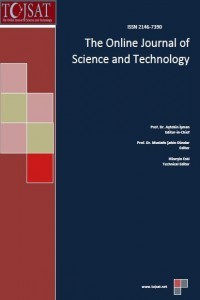Shear and Pull-Out Strength of Steel Anchors installed in Autoclaved Aerated Concrete
Shear and Pull-Out Strength of Steel Anchors installed in Autoclaved Aerated Concrete
___
- Alternative Energy and Efficiency Information Center. (2013). Energy in Thailand : Facts & Figures 2012. Department of Alternative Energy Development and Efficiency, Ministry of Energy, Thailand.
- Chirarattananon, S. (2012). Building Energy Conservation in Thailand . STI Policy Forum 2012, Thailand.
- Chopradub, A. (2010). Zur Tragfähigkeit von punktförmig gestützen filigranen Fassadenplatten aus faserverstärktem Feinkornbeton. Dissertation. Technische Universität Kaiserslautern, Germany.
- FibreC by Rieder (http://www.rieder.cc).
- Jutakanon, P., & Sathitisangworn, C. (2007). A Study of Tensile Strength of Chemical Bolt embedded in Concrete. Department of Civil Engineering, Burapha University, Thailand.
- Perez-Lombard, L., Ortiz, J., & Pout, C. (2008). A review on buildings energy consumption information. Energy and Buildings Volume 40, 3, 394-398.
- Wolfram, C., Shelef, O., & Gertler, P.J. (2012). How Will Energy Demand Develop in the Developing World?. Journal of Economic Perspectives. American Economic Association. vol. 26(1) (pp.119-138).
- ISSN: 2146-7390
- Başlangıç: 2011
- Yayıncı: The association of science, education and technology
Shear and Pull-Out Strength of Steel Anchors installed in Autoclaved Aerated Concrete
Urban Public Bus Adequacy Evaluation Analysis: A Johor Bahru, Johor, Malaysia Case Study
Seyed Vahid Kamal ALAVİ, Mohamad Safie MOAHAMD
Effect of Several Oxides on Ultrasonic Degradation of Formic Acid
